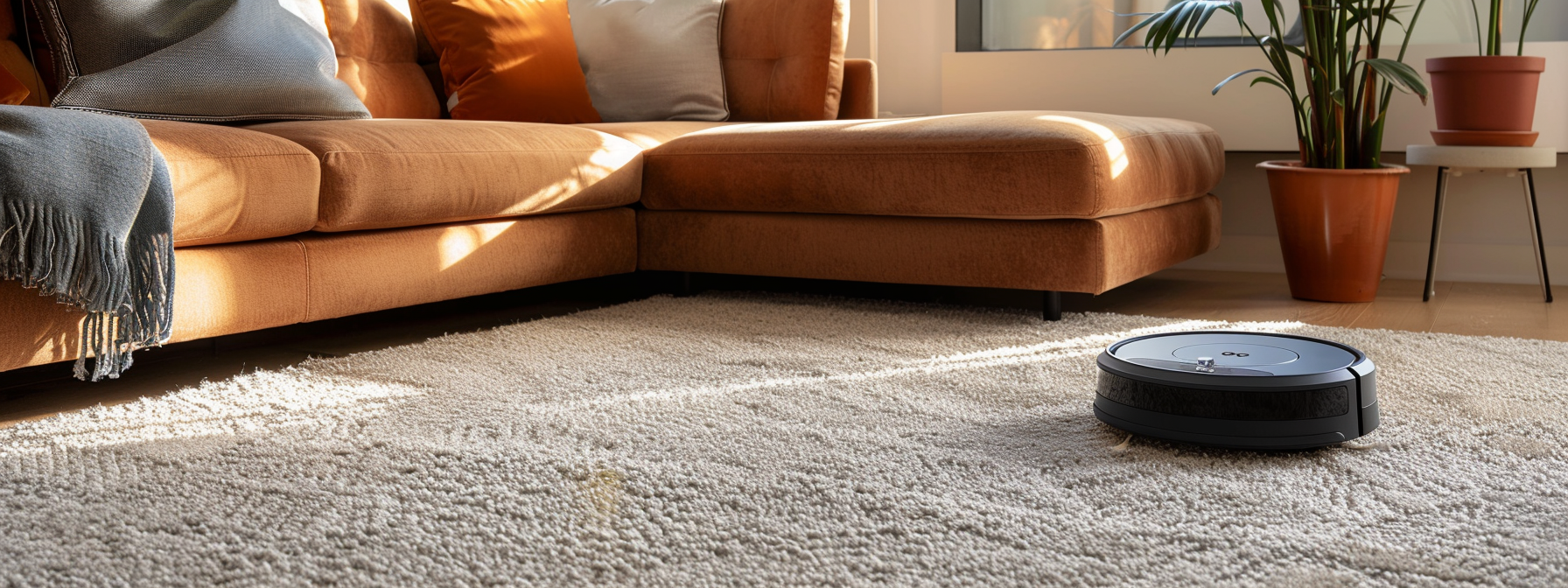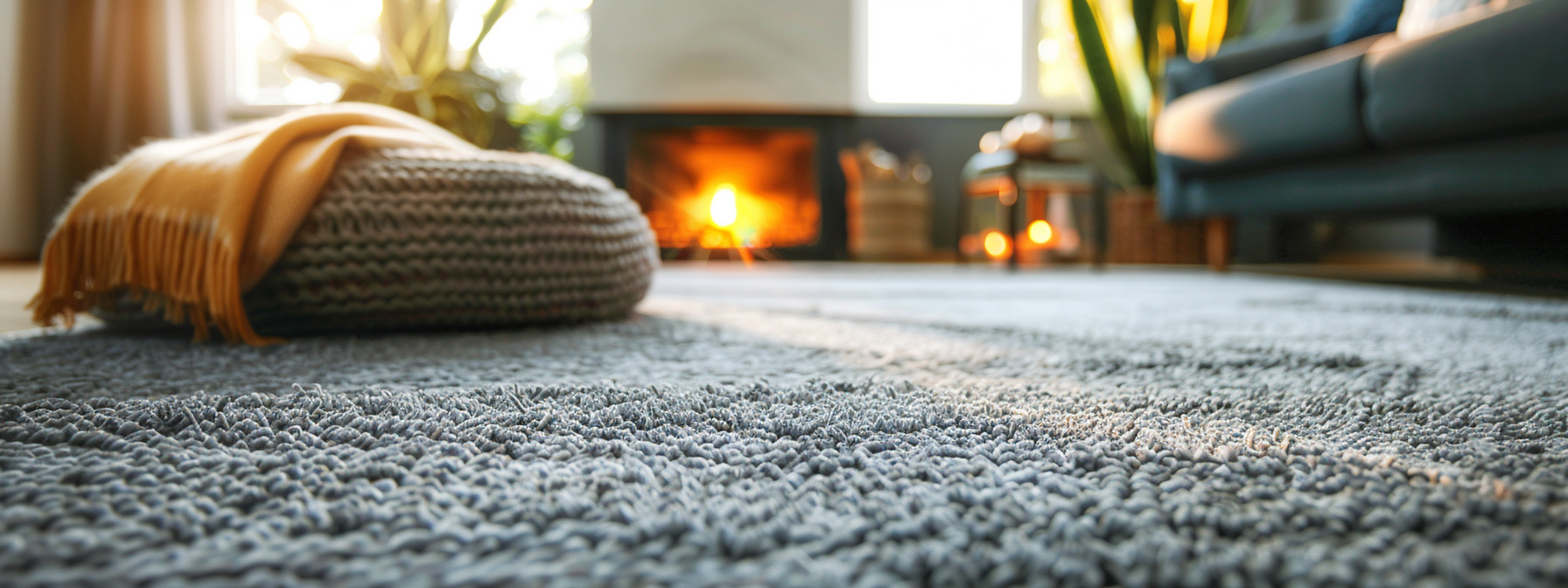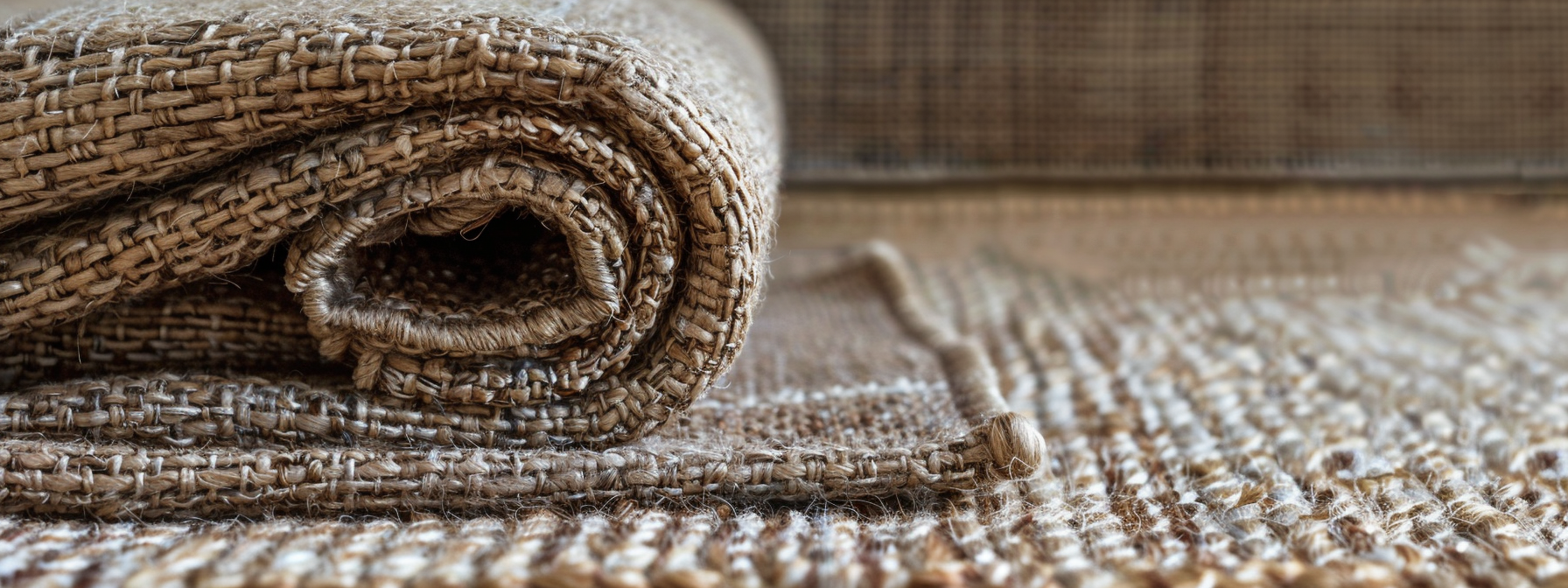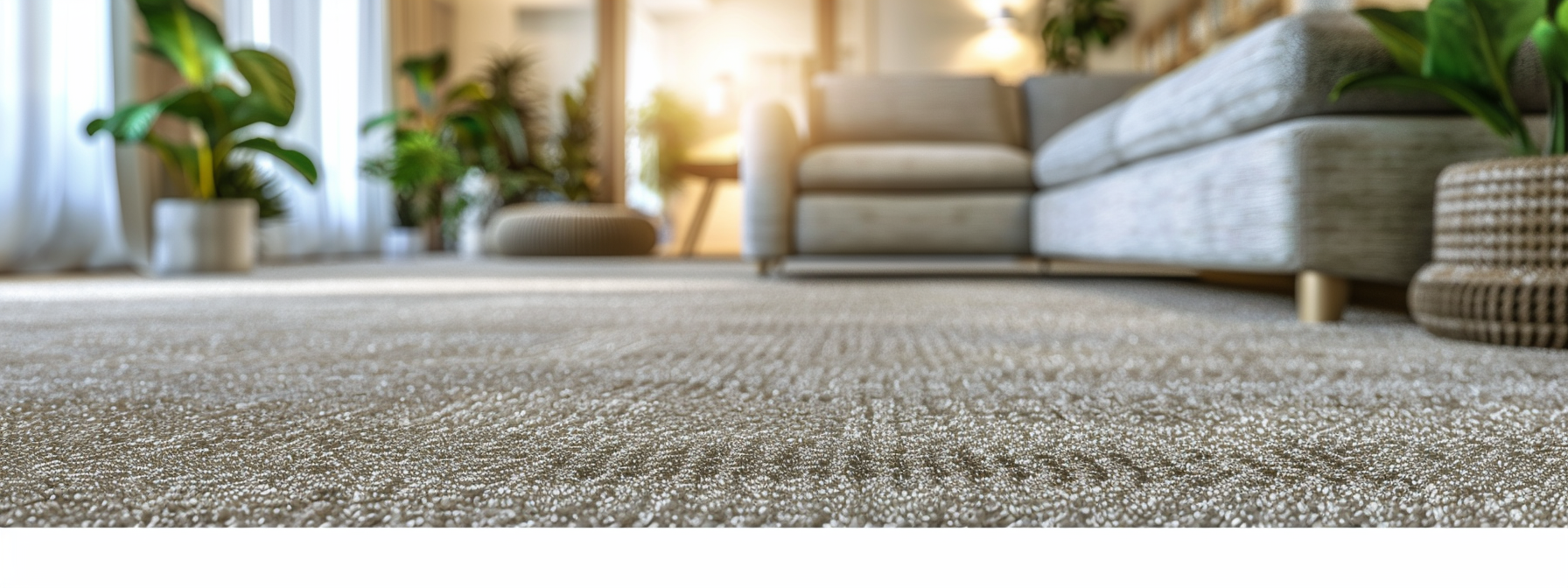Steam Cleaning: The Ultimate Solution for Stubborn Stains

Steam cleaning, a highly effective method for removing stains from various surfaces including clothes, utilizes high-temperature steam.
This process involves the use of steam cleaners that generate steam and pressure from hot water, directed onto the surface to be cleaned.
Heat, Moisture and Pressure
The primary mechanism behind steam cleaning’s effectiveness is the combination of heat, moisture, and pressure.
The heat component, usually ranging between 120-220°F, plays an integral role in loosening and removing dirt, grime, and stains by breaking down the bonds between the dirt and the surface.
Moisture aids in softening and breaking down the dirt, while the pressure aspect physically forces the dirt and grime away from the surface. This method is not only used for cleaning but also deep sanitizing, as the heat from the steam can kill germs and bacteria on contact
The Efficacy of Steam Cleaning
Steam cleaning is more efficient than other traditional cleaning methods, offering deep-cleaning solutions that are desirable for various applications. Its effectiveness extends from removing the mildest to the toughest stains, including those from wine spills, yogurt drips, and ketchup drops.
The process is simple yet effective, working into carpet fibers and other materials to lift stains with relative ease. An additional advantage of steam cleaning is its environmental friendliness. It is an eco-friendly option as the process only uses water and does not require the addition of any chemical cleaners.
This aspect also makes it a faster and more cost-effective method, considering the value it brings to home maintenance.
Versatility and Limitations
Steam cleaning is versatile in its application, proving effective against various types of stains. It can remove oil-based stains like grease, oil, and makeup, as well as protein-based stains such as blood, sweat, and food from clothes and upholstery.
The method’s heat and moisture work together to loosen and break down these stains for easier removal. It’s important to note the limitations of steam cleaning. It may not be effective on all types of fabrics and can cause shrinkage or discoloration in some materials.
It’s recommended to test the fabric first before proceeding with steam cleaning. Steam cleaning might not be as effective on old, set-in stains and may require multiple treatments for complete removal.
Certain types of stains, like dye and tannin stains, may also be resistant to steam cleaning and might require additional products or steps for removal.

The Mechanics of Steam Cleaning
Steam cleaning, a revolutionary cleaning method, is predicated on the science of vaporized water. This process begins with heating water to a high temperature, typically around 212°F (100°C), to produce steam.
This steam, under high pressure, is then expelled through a nozzle or brush attachment, allowing it to deeply penetrate the surface being cleaned. The synergy of heat, pressure, and moisture is important in this process. It helps to loosen, break down, and ultimately remove dirt, grime, and stains from a variety of surfaces.
The heat component also plays a vital role in sanitizing surfaces, as it effectively kills bacteria, mold, dust mites, and other allergens, presenting steam cleaning as not only a cleaning solution but also a method for ensuring a healthier environment.
Advantages of Steam Cleaning
The advantages of steam cleaning are manifold:
- Deep Cleaning: The high-pressure steam reaches deep into surfaces, ensuring a thorough cleaning experience that surpasses many traditional methods. This ability to penetrate deeply is particularly effective in removing dirt, grime, and stains that might be left behind by other methods.
- Sanitization: Steam cleaning stands out in its ability to sanitize surfaces. The high heat from the steam is lethal to a wide range of microorganisms, including bacteria and mold, contributing to a healthier indoor environment.
- Eco-Friendly Approach: This method utilizes only water and heat, eliminating the need for chemicals. This not only makes it an environmentally friendly option but also ensures that it is safe and free from potentially harmful chemicals.
- Versatility: Steam cleaners are adaptable to a wide array of surfaces such as carpets, upholstery, tiles, and grout, demonstrating their versatility in different cleaning scenarios.
Addressing Allergies through Steam Cleaning
In addition to its cleaning and sanitizing capabilities, steam cleaning is also beneficial for allergy sufferers.
By effectively removing allergens, this method can significantly alleviate symptoms for individuals dealing with asthma, hay fever, or other allergies. This aspect is particularly important for maintaining a living environment conducive to health and well-being.

Types of Stains Steam Cleaning Can Remove
Steam cleaning, utilizing heat and moisture, is a potent method for tackling various stains on carpets, upholstery, and fabrics.
This process breaks down stains, facilitating easier removal. Steam cleaning’s ability to lift dirt, grime, and stains from carpets is particularly notable, especially in removing food and beverage spills, pet stains, water-soluble stains like coffee and juice, as well as dust and dirt buildup.
The effectiveness of steam cleaning on carpets, however, is influenced by factors such as stain type, age, and carpet material. Synthetic carpets often respond well to steam cleaning, whereas natural fiber carpets may require more careful treatment.
Steam Cleaning Effectiveness on Clothing
When it comes to clothing, steam cleaning can successfully combat various stains, including water-based stains like coffee, tea, and juice, light oil-based stains, food spills, and dirt buildup.
The process involves using hot, pressurized steam to penetrate fabric fibers, effectively loosening and potentially breaking down stains. The effectiveness on clothes depends on the stain type, fabric material, and the quality of the steam cleaner.
Steam cleaning is generally more effective on natural fibers like cotton and synthetics, but delicate fabrics may need gentler handling.
Upholstery Stain Removal with Steam Cleaning
Steam cleaning is also effective for upholstery stain removal, rejuvenating the appearance of furniture.
It particularly excels against water-based stains such as beverage spills, food stains, dirt, and pet accidents. The steam cleaning process for upholstery involves preparation like vacuuming, patch testing, and possibly pre-treatment for stubborn stains.
The steam cleaner’s nozzle should be used close to the fabric with short bursts of steam. Post-cleaning, immediate moisture extraction, and proper drying are essential to prevent over-wetting and mold growth.
Versatility and Limitations of Steam Cleaning
Steam cleaners are versatile in addressing various stain types, including grease, oil, food spills, pet stains, and even mold and mildew.
They are gentle on surfaces, don’t require harsh chemicals, and provide a hygienic clean by killing germs and bacteria. Steam cleaning is efficient and time-saving, restoring cleanliness without resorting to abrasive methods. Choose the right steam cleaner and use the proper technique, especially for tough, set-in stains.
Steam cleaning has limitations on delicate fabrics or materials sensitive to heat and moisture, and may not be effective against oil-based or dye-based stains. In such cases, consulting a professional cleaner or seeking alternative stain removal methods is recommended.
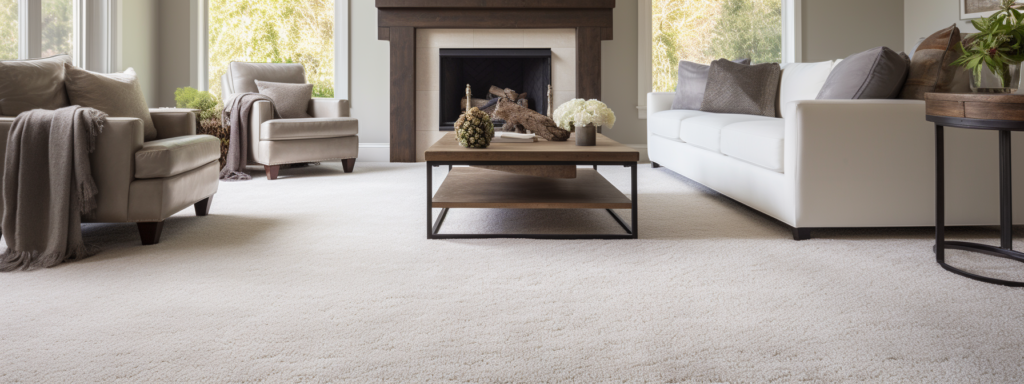
Equipment and Supplies for Steam Cleaning
Selecting an appropriate steam cleaner is imperative for effective stain removal. Models vary widely in size, power, accessories, and price. Key factors to consider include:
- Portable Handheld Models: Ideal for small jobs like upholstery, mattresses, and auto interiors. Models with attachments offer more versatility.
- Canister Steam Cleaners: Suitable for deep cleaning carpets and large areas, canister cleaners are wheeled for easy maneuverability. Opt for models with good steam pressure.
- Powerful Steam Generation: Seek cleaners that generate very hot steam (over 200°F) and have strong steam pressure for better results.
- Large Tank Capacity: Models with tanks of 1.5 liters or more allow for longer continuous use, requiring less frequent refilling.
- Attachments: Look for brush heads, nozzle concentrators, and microfiber pads for versatility across different surfaces.
- Trisodium Phosphate (TSP) Injection: Some models offer TSP injection for enhanced cleaning. Consider models with the option to turn off TSP if desired.
- Truck-Mounted Units: For professional, whole-house carpet cleaning, truck-mounted steam extractor units are highly effective but require a work vehicle.
Essential Supplies for Steam Cleaning
In addition to the steam cleaner itself, several supplies enhance the steam cleaning process, contributing to its effectiveness. Due to the limitations encountered in research, a comprehensive list of such supplies could not be obtained. Generally, these may include:
- Distilled Water: To prevent mineral buildup in the steam cleaner.
- Microfiber Cloths: For wiping surfaces post-steam cleaning.
- Cleaning Solutions: Some steam cleaners allow the use of cleaning solutions for tougher stains.
- Protective Gear: Gloves and safety goggles for handling high-temperature steam.

Step-by-Step Guide to Steam Cleaning for Stain Removal
Preparation for Steam Cleaning
- Remove Furniture: Clear the space of furniture for easy access and movement.
- Vacuum Cleaning: Vacuum the area to remove excess dirt, dander, or pet hair. This step helps to prevent messier stains when exposed to steam.
- Pre-Treat Stains: Apply a solution of vinegar, baking soda, rubbing alcohol, or cornstarch on the stains and leave it for about 5 minutes. This helps in breaking down the stains before steam cleaning.
- Soil Emulsifier Application: Spray a soil emulsifier to loosen soil bound on the surface. After spraying, apply some fabric shampoo and brush over the stained spot. There’s no need to rinse as the steam cleaner will take care of this.
Steam Cleaning Process
- Fill the Steam Cleaner: Ensure the water canister is filled to the recommended level to avoid malfunction.
- Powering the Steam Cleaner: Plug in the steam cleaner to a power outlet and let the water heat up to a vaporizing point, normally between 200 – 300 degrees Fahrenheit.
- Begin Steam Cleaning: Start from one corner and work your way across the carpet, avoiding exerting extra pressure on the steam cleaner or walking over cleaned areas.
- Drying: Open windows or use fans to aid in drying the carpet before replacing furniture.
Post-Cleaning Steps
- Blotting Stains: If stains remain visible, use water and dish soap to blot out the stain. Rinse and repeat until the stain is gone.
- Vinegar Treatment: Saturate the stained spot with vinegar, leave it for 5-10 minutes, then gently rub in circular motions. Sponge-rinse with water and repeat as needed.
- Additional Vacuuming: If your steam cleaner lacks a suction mechanism, use a separate vacuum cleaner to remove broken-down grime and dirt.
Additional Tips for Effective Steam Cleaning
- Use Distilled Water: To prevent mineral deposits, use distilled water in the steam cleaner.
- Check Fabric Labels: Always test steam on an inconspicuous spot and start with the lowest settings to avoid damage.
- Work in Sections: For large areas, divide the work into sections and complete one before moving to the next.
- Overlap Passes: Ensure no area is missed and go over stubborn stains multiple times.
- Excess Moisture Removal: Use towels and fans to extract excess moisture and ensure thorough drying.
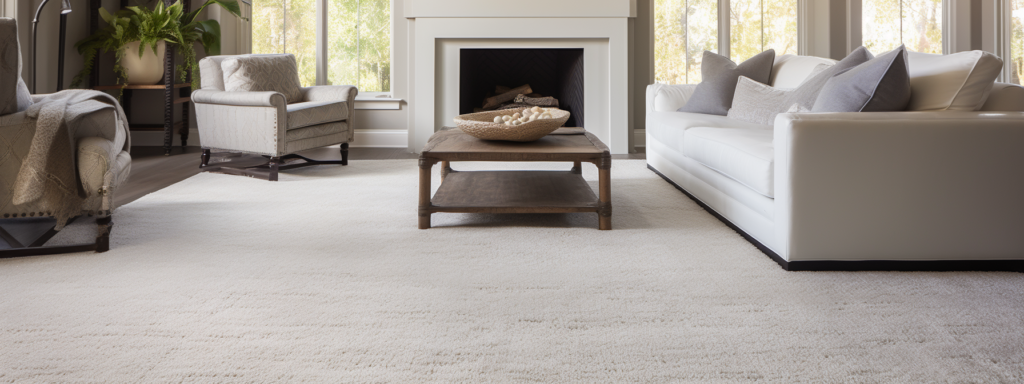
Precautions and Safety in Steam Cleaning
Steam cleaning, while safe and eco-friendly, demands adherence to certain precautions:
- Read the User Manual: Familiarize yourself with your steam cleaner’s specific instructions and safety guidelines.
- Protective Gear: Wear gloves to protect against hot surfaces and steam, and consider eye protection, especially for overhead cleaning.
- Child and Pet Safety: Keep children and pets away from the cleaning area to avoid hazards from the appliance’s operation and high-temperature steam.
- Electrical Safety: Be mindful of the power cord placement to prevent tripping hazards and ensure the electrical outlet has GFCI protection.
- Heat and Pressure Management: Handle the steam cleaner with care, avoiding direct contact with hot steam or surfaces. Adhere to recommended steam pressure and temperature settings.
- Post-Use Care: Allow the appliance to cool down before refilling or maintenance, and store it securely.
- Ventilation: Ensure adequate airflow in enclosed spaces to prevent excessive humidity and discomfort.
Risks and Limitations
While steam cleaning is generally safe, certain risks must be acknowledged:
- Surface Sensitivity: Some materials may be sensitive to heat and moisture, requiring careful testing before steam cleaning.
- Electrical Hazards: Proper handling of the steam cleaner’s power cord and electrical connections is very important to avoid accidents.
- Overheating Risks: Prolonged exposure to steam can lead to overheating of surfaces, potentially causing damage or discoloration.
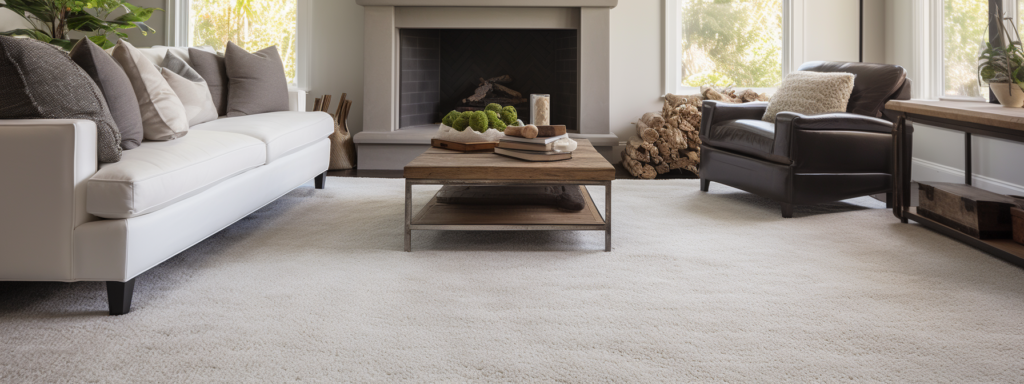
The Ultimate Solution for Stubborn Stains
The investigation into steam cleaning reveals its remarkable efficacy in removing a variety of stubborn stains from different surfaces, including carpets, upholstery, and clothing.
This method’s ability to combine high temperatures with pressure and moisture results in a powerful cleaning solution, capable of tackling even the most persistent stains.
From food and beverage spills to pet accidents, steam cleaning stands out for its deep cleaning capabilities and versatility.
Environmental and Health Benefits
An equally significant aspect of steam cleaning is its environmental friendliness. Utilizing only water and heat, this method eliminates the need for harsh chemical cleaners, making it a safer option for both the environment and the users.
The high temperatures involved in steam cleaning are effective in killing a wide range of germs and bacteria, contributing to a healthier living space.
Precautions for Safe and Effective Use
While steam cleaning is generally safe, it’s imperative to follow certain safety guidelines.
These include reading the user manual thoroughly, wearing protective gear, keeping children and pets at a safe distance, avoiding electrical hazards, and ensuring adequate ventilation in the area being cleaned.
Adhering to these precautions ensures a secure and effective cleaning experience.
Final Recommendations
Steam cleaning is an effective, eco-friendly, and versatile solution for removing stubborn stains.
The key to maximizing its benefits lies in understanding the type of stains, selecting the appropriate steam cleaner and supplies, and adhering to safety precautions.
Whether for routine maintenance or tackling challenging cleaning tasks, steam cleaning offers a practical and efficient solution for maintaining cleanliness and hygiene in various settings.
Author
-

As the Co-Owner of Masterful, Randy has been providing quality cleaning services to the Salem and Portland areas of Oregon for many years. He has built a reputation for excellence in the industry. His team take prides in using the latest cleaning techniques and technologies to deliver exceptional results every time.


